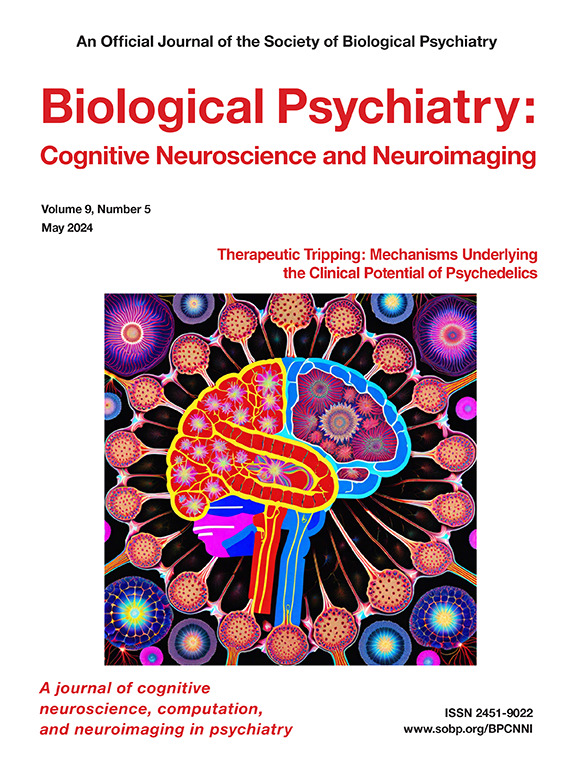阿尔茨海默氏症连续症的大脑结构差异:从大型多站点神经成像联盟中洞察异质性。
IF 4.8
2区 医学
Q1 NEUROSCIENCES
Biological Psychiatry-Cognitive Neuroscience and Neuroimaging
Pub Date : 2025-10-01
DOI:10.1016/j.bpsc.2024.07.019
引用次数: 0
摘要
导言:神经退行性疾病需要多机构合作研究才能全面掌握其复杂多样的病理发展过程,但由于数据的异质性,在汇总全球数据时需要谨慎。本研究调查了阿尔茨海默病(AD)各阶段的大脑结构,以及不同异质性来源之间的关系:利用 6 个国际数据集(n>27,000),通过荟萃分析研究了神经影像结构标记与阿尔茨海默病连续性的关联。我们研究了磁共振成像采集、研究设计和人群等因素之间的关联是否存在差异:结果:根据数据获取方式的不同,相关性略有不同,但模式相似。初步结果表明,不同种族群体的神经影像标记物与AD的关系存在差异:讨论:数据的多样性为了解 AD 的神经基质提供了独特的视角,但数据收集的统一处理和透明度仍有待提高。全球合作应接受数据中存在的固有异质性,并在荟萃分析阶段量化其对研究结果的贡献。本文章由计算机程序翻译,如有差异,请以英文原文为准。
Structural Brain Differences in the Alzheimer’s Disease Continuum: Insights Into the Heterogeneity From a Large Multisite Neuroimaging Consortium
Background
Neurodegenerative diseases require collaborative, multisite research to comprehensively grasp their complex and diverse pathological progression; however, there is caution in aggregating global data due to data heterogeneity. In the current study, we investigated brain structure across stages of Alzheimer’s disease (AD) and how relationships vary across sources of heterogeneity.
Methods
Using 6 international datasets (N > 27,000), associations of structural neuroimaging markers were investigated in relation to the AD continuum via meta-analysis. We investigated whether associations varied across elements of magnetic resonance imaging acquisition, study design, and populations.
Results
Modest differences in associations were found depending on how data were acquired; however, patterns were similar. Preliminary results suggested that neuroimaging marker–AD relationships differ across ethnic groups.
Conclusions
Diversity in data offers unique insights into the neural substrate of AD; however, harmonized processing and transparency of data collection are needed. Global collaborations should embrace the inherent heterogeneity that exists in the data and quantify its contribution to research findings at the meta-analytical stage.
求助全文
通过发布文献求助,成功后即可免费获取论文全文。
去求助
来源期刊

Biological Psychiatry-Cognitive Neuroscience and Neuroimaging
Neuroscience-Biological Psychiatry
CiteScore
10.40
自引率
1.70%
发文量
247
审稿时长
30 days
期刊介绍:
Biological Psychiatry: Cognitive Neuroscience and Neuroimaging is an official journal of the Society for Biological Psychiatry, whose purpose is to promote excellence in scientific research and education in fields that investigate the nature, causes, mechanisms, and treatments of disorders of thought, emotion, or behavior. In accord with this mission, this peer-reviewed, rapid-publication, international journal focuses on studies using the tools and constructs of cognitive neuroscience, including the full range of non-invasive neuroimaging and human extra- and intracranial physiological recording methodologies. It publishes both basic and clinical studies, including those that incorporate genetic data, pharmacological challenges, and computational modeling approaches. The journal publishes novel results of original research which represent an important new lead or significant impact on the field. Reviews and commentaries that focus on topics of current research and interest are also encouraged.
 求助内容:
求助内容: 应助结果提醒方式:
应助结果提醒方式:


